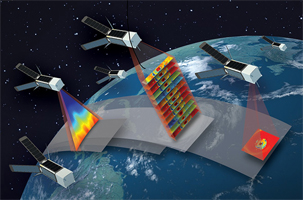 NASA’s Technology Transfer program has created an online resource to promote commercial use of data and the software tools needed to work with it.
NASA’s Technology Transfer program has created an online resource to promote commercial use of data and the software tools needed to work with it.
While NASA’s policy of free and open remote-sensing data has long benefited the scientific community, other government agencies and nonprofit organizations, it has significant untapped potential for commercialization.
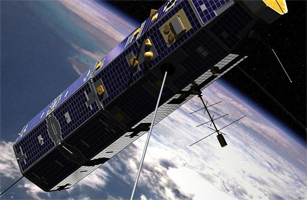 With the Remote Sensing Toolkit, users will now be able to find, analyze and utilize the most relevant data for their research, business projects or conservation efforts. The toolkit provides a simple system that quickly identifies relevant sources based on user input. The toolkit will help users search for data, as well as ready-to-use tools and code to build new tools.
With the Remote Sensing Toolkit, users will now be able to find, analyze and utilize the most relevant data for their research, business projects or conservation efforts. The toolkit provides a simple system that quickly identifies relevant sources based on user input. The toolkit will help users search for data, as well as ready-to-use tools and code to build new tools.
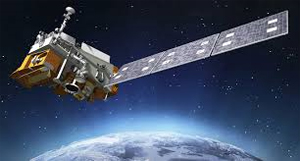 “This new tool makes finding and using NASA satellite data easier than ever before, and we hope it sparks innovation among the entrepreneurial community and leads to further commercialization of NASA technology and benefits people across the world,” said Daniel Lockney, NASA’s Technology Transfer program executive. “Our mission to bring NASA technology down to Earth is expanding with the release of this remote sensing toolkit.”
“This new tool makes finding and using NASA satellite data easier than ever before, and we hope it sparks innovation among the entrepreneurial community and leads to further commercialization of NASA technology and benefits people across the world,” said Daniel Lockney, NASA’s Technology Transfer program executive. “Our mission to bring NASA technology down to Earth is expanding with the release of this remote sensing toolkit.”
Through its constellation of Earth observation satellites, NASA collects petabytes of data each year. The variety of open source tools created to access, analyze and utilize the data from these satellites is familiar to millions of science users, but accessing and utilizing this data remains daunting for many potential commercial users.

For example, NASA’s remote sensing data and tools are spread out across dozens of sites. The NASA Technology Transfer program reviewed more than 50 websites and found that no source provided a comprehensive collection of information or a single access point to begin a search.
While the Remote Sensing Toolkit is new, using NASA satellite data to create commercial products isn’t.
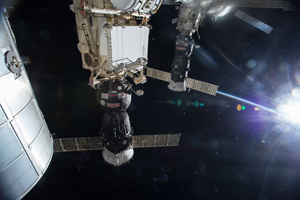
NASA Photo: ISS Progress 47 is shown docked at the International Space Station’s Pirs docking compartment.
“Over the years, many organizations around the world have found innovative ways to turn NASA satellite data into beneficial information products here on Earth,” said Kevin Murphy of NASA’s Earth Science Division in Washington. “Remote Sensing Toolkit will help grow the number of users who put NASA’s free and open data archive to work for people.”
NASA Spinoff LandViewer, a subscription-based software, relies on a variety of data, including NASA satellite data, to provide daily updates on the state of corn vegetation. The result is a prediction of future corn production on national, state and county scales.
The Technology Transfer program will host a tutorial of Remote Sensing Toolkit. To participate, potential users should sign up to be notified of future webinars.
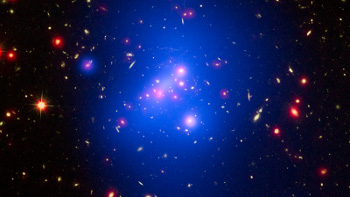
Cluster of young galaxies. NASA Photo
NASA’s Technology Transfer program, managed by the agency’s Space Technology Mission Directorate, ensures technologies developed for missions in exploration and discovery are broadly available to the public, maximizing the benefit to the nation.
Examples of some of these technologies include data from NASA’s Jet Propulsion Laboratory, Pasadena, California, from the ASTER mission, that’s being used in a snowboarding game to create real-life mountains. This and other examples are featured in a Tumblr post:

Cuts in ground-level, ozone-forming pollutants are cleansing the West Coast’s cloud-and-smog mix, but ozone higher in the troposphere has not been dropping in response. Photo: NASA/JPL
When Electronic Arts (EA) decided to make SSX, a snowboarding video game, it faced challenges in creating realistic-looking mountains. The solution was the ASTER Global Digital Elevation Map, made available by the Jet Propulsion Laboratory, which EA used to create 28 real-life mountains from 9 different ranges for its award-winning game.
Click here for more information about the Remote Sensing Toolkit.
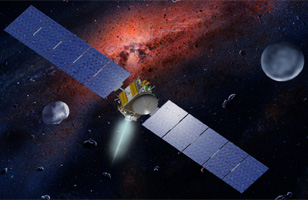
NASA Artist illustration of Dawn Spacecraft
The data collected by NASA represent a significant public investment in research. NASA holds these data in a public trust to promote comprehensive, long-term Earth science research. Consequently, NASA developed policy consistent with existing international policies to maximize access to data and to keep user costs as low as possible.
These policies apply to all data archived, maintained, distributed or produced by NASA data systems. Tulsa Today publishes NASA news on a regular basis and provides display advertising with links to specific programs Tulsa Today editors believe are of significant public value and interest as a public service.
